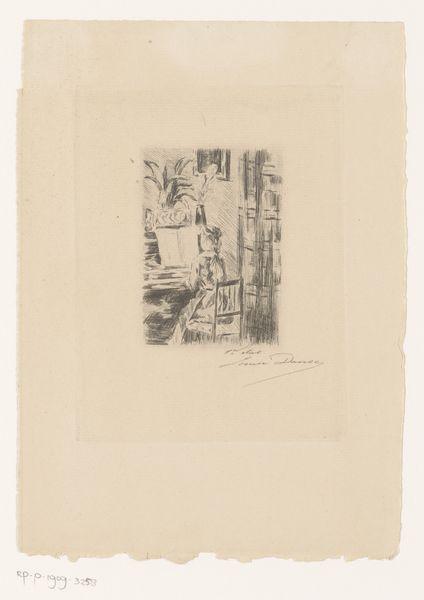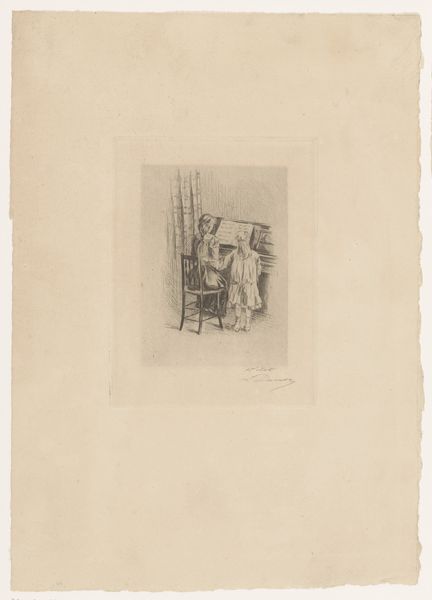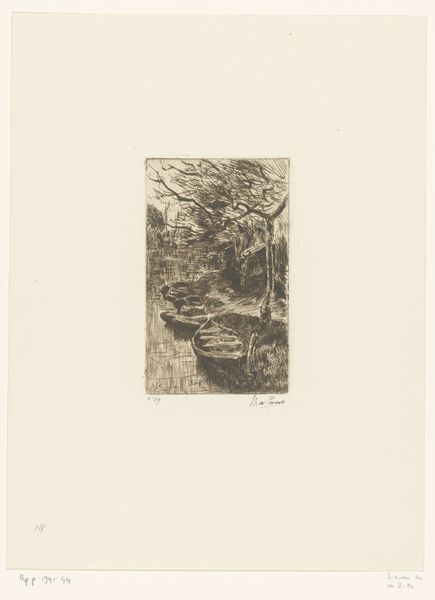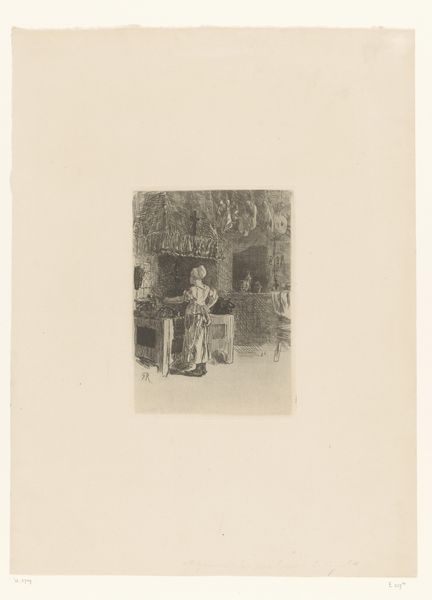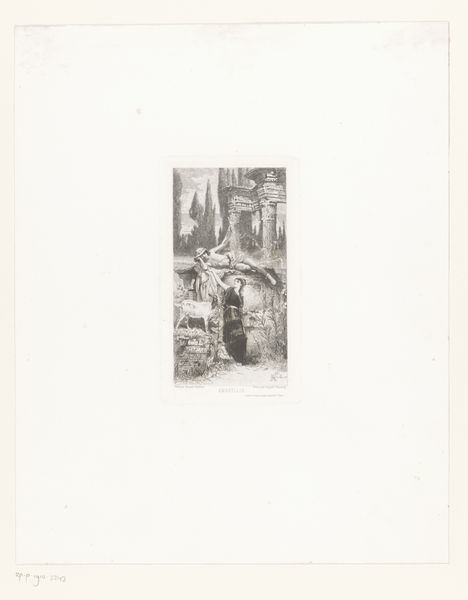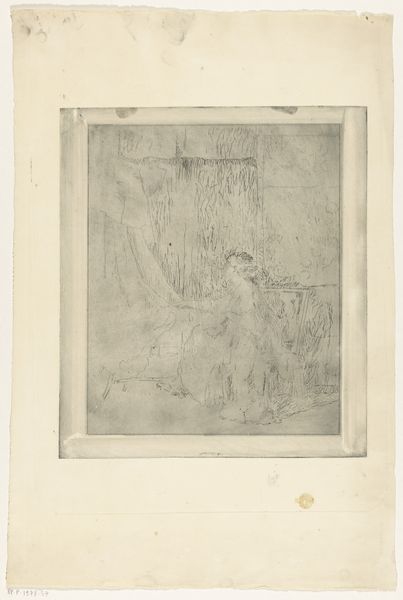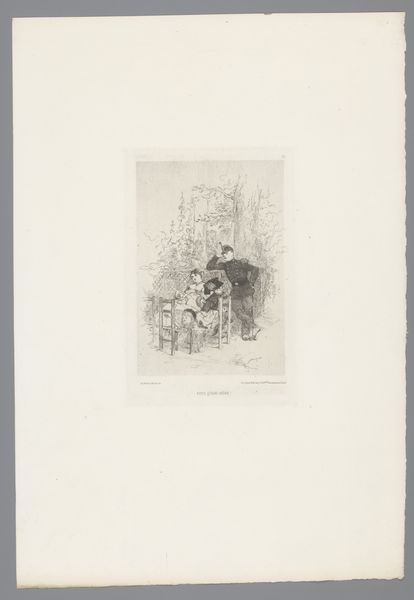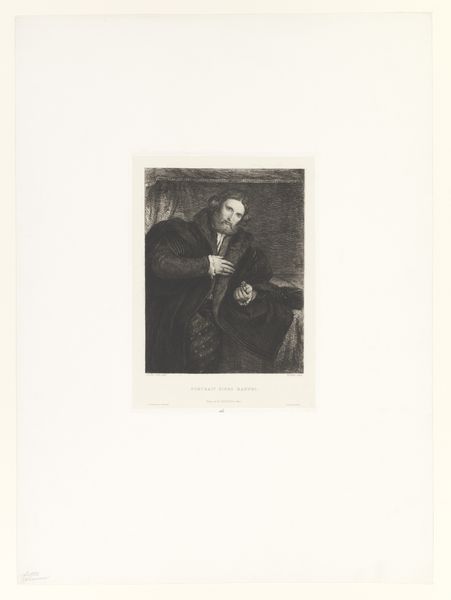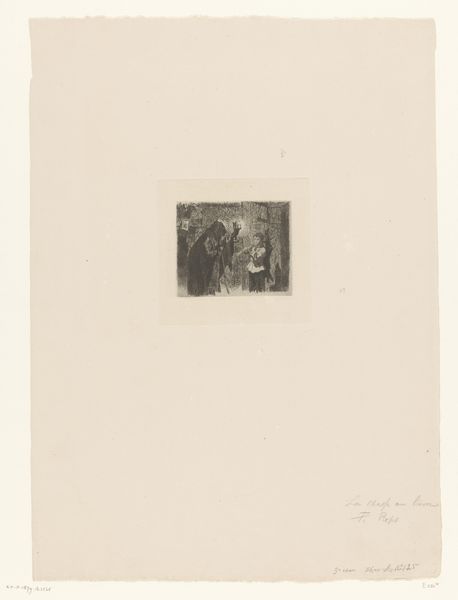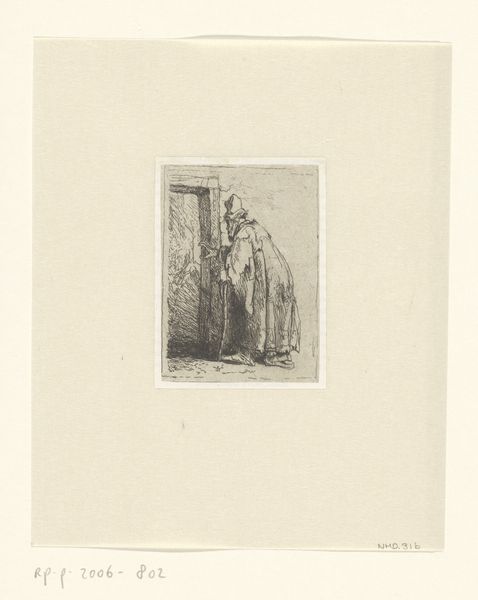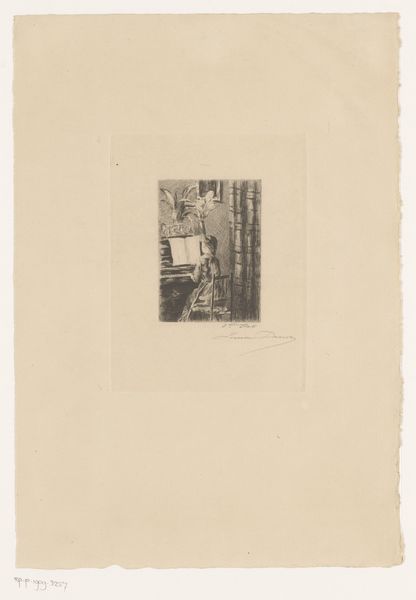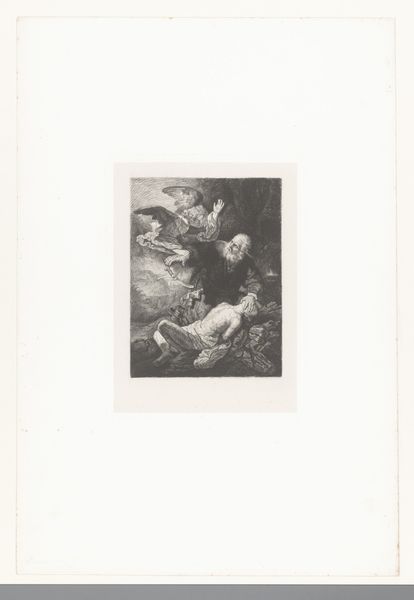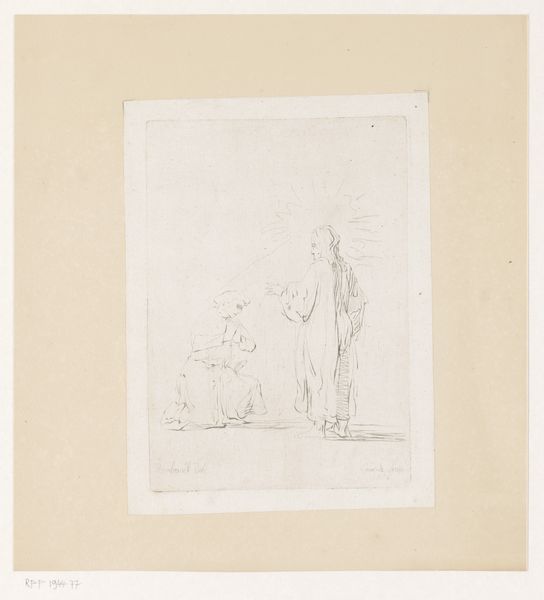
A blind hurdy-gurdy player and family receiving alms 1757 - 1825
0:00
0:00
drawing, print, paper, pen, engraving
#
drawing
#
narrative-art
#
ink paper printed
# print
#
pencil sketch
#
old engraving style
#
paper
#
pen-ink sketch
#
pen
#
genre-painting
#
engraving
Dimensions: height 177 mm, width 132 mm
Copyright: Rijks Museum: Open Domain
Curator: Here we have an engraving dating between 1757 and 1825, currently residing at the Rijksmuseum. It is entitled “A blind hurdy-gurdy player and family receiving alms.” Editor: It’s hauntingly simple, isn’t it? Stark lines capture a moment of profound vulnerability. There's something incredibly human about the rawness of the image. Curator: It resonates, certainly. The hurdy-gurdy itself, often a symbol of itinerant musicians and wandering souls, becomes even more poignant here. Blindness is not merely a physical condition; it signifies a dependency, perhaps a societal blindness to their plight. Editor: Absolutely. And note how the family huddle together, each seemingly trapped in their own sphere of need, connected by circumstance and, let's be frank, systemic inequity. The composition screams of power dynamics. The figure handing out alms stands higher, bathed in more light. It’s a visual declaration of who holds agency. Curator: A very valid point, particularly given the historical context. The image is of its time, undoubtedly shaped by the conventions of genre painting and perhaps even moralizing narratives popular then. Note how the alms giver is facing toward the left of the work while the light is coming from the right. Editor: This piece also feels intrinsically tied to our understanding of charity itself, doesn't it? Acts of charity throughout history are almost always rooted in uneven distributions of power. We should question how systems create situations of economic precarity. Who is responsible for these inequalities, and what role can institutions like museums play? Curator: It's a timeless and agonizing question that reverberates throughout human history. Through the centuries, the symbol of musical instruments such as the hurdy-gurdy remain as potent indicators of human artistic expressions in difficult and complex environments. Editor: Ultimately, this engraving becomes an invitation, or perhaps an urgent call, for empathy and action. The conversation isn't just about aesthetics, is it? But also a reckoning with our social responsibilities to the invisible ones in our societies. Curator: Indeed. I believe it pushes us to confront uncomfortable truths about privilege, human cost, and legacy of inequity. Editor: The symbolic weight carried within the picture truly endures across generations. Thank you.
Comments
No comments
Be the first to comment and join the conversation on the ultimate creative platform.
